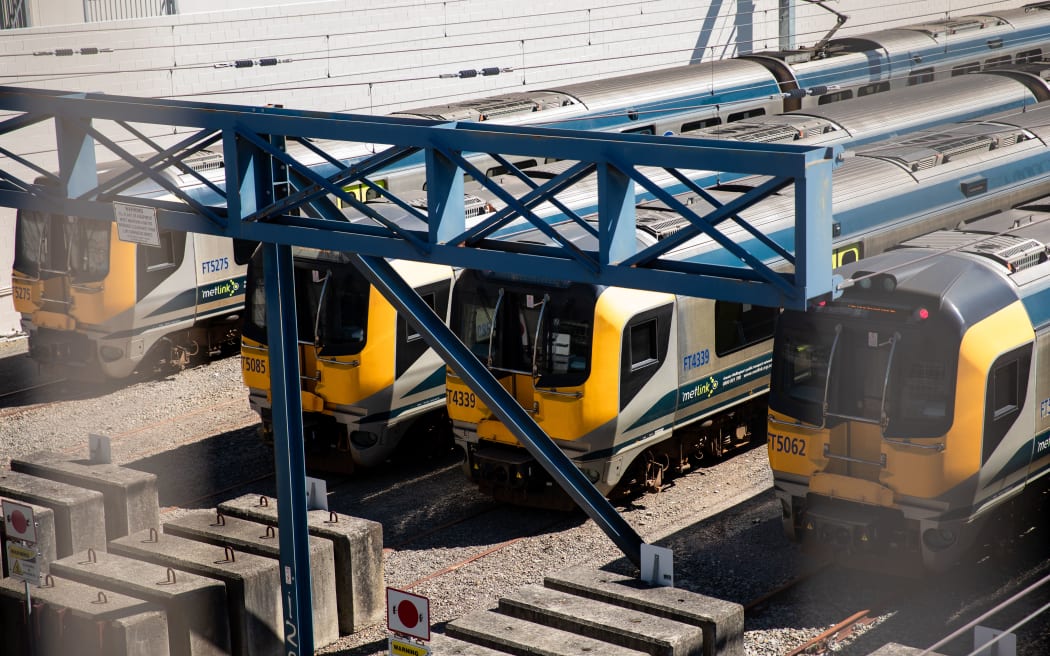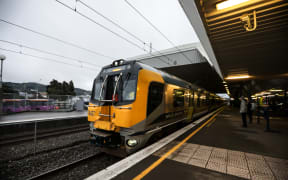
File image. Photo: RNZ / Samuel Rillstone
The same week the New York Times named exploring Aotearoa New Zealand by train as one of the best things to do in 2024, commuters are lamenting the country's "Goldilocks" rail network.
Those relying on the line between Wellington and Kāpiti have had a frustrating start to the working year, with heat restrictions and then a power outage - also caused by the warm weather, according to KiwiRail - disrupting services.
KiwiRail said trains were forced to slow to 40km/h when track temperatures reached 40 degrees Celsius. Heat restrictions were common over summer, and they could be in place late into the evening during hot summer days.
Here comes the sun
Hang on. We're talking about a region that has six days per year, on average, where the maximum air temperature exceeds 25C.
A 2022 NIWA report on climate change projections said by 2040 and 2090, increases of up to 10 "hot days" are projected for most of the area.
Still, "heat restrictions" isn't a phrase commonly associated with Wellington - a city known as one of the windiest in the world.
"Typically, the rail gets 20 degrees warmer than the actual air temperature," a KiwiRail spokesperson said via email.
Meaning Wellingtonians can be wrapped up while the railway tracks - especially those in direct sunlight - can be hitting extreme temperatures.
The operator has heat sensors across the country's rail network.
"As the track heats up, it becomes more prone to misaligning," KiwiRail added. "Overhead wires can also be affected by heat and sag in places. Throughout the KiwiRail network we have a system in place on areas of known buckle risk where heat restrictions are put in place."
Hot tracks
Steel tracks expand in the heat, potentially damaging rail-side equipment such as sensors and in rare cases, causing the track to misalign. Usually, as tracks cool again, they realign.
But any misalignment must be inspected before trains pass over it, KiwiRail said.
Often, trains will be able to pass over at normal or reduced speeds. Occasionally, the track can't be used.
"When rail temperature exceeds 40 degrees, we start to apply speed restrictions on bespoke areas of known risk, these can be for many reasons such as sites under repair or awaiting maintenance, and when rail temperature exceeds 50 degrees, we apply blanket speed restrictions."
Overhead lines
KiwiRail's tracks are designed to operate between -6C and 60C. The overhead wires that power the electric trains can also be damaged by hot weather and have similar operating limits.
On 10 January, all services in and out of the capital were replaced by buses due to an overhead powerline failure.
KiwiRail metros general manager Jon Knight said consecutive days of warm weather caused the lines to expand and sag.
Too much sag - usually kept in check by a pulley system - will break overhead line equipment.
Wednesday's faults were related to insulator and weight tension mechanisms, which had exceeded their operating limits and resulted in outages, Knight said.
KiwiRail rectified all faults, meaning there were no safety risks, but the operator was conducting a full investigation into the shut down, he said.
A global issue
Similar heat restrictions apply to tracks internationally.
Melbourne Metro has a blanket restriction at a rail temperature of 42C. Perth's restrictions start at 37C, and similar for Sydney Metro.
The United Kingdom slows things down when rail temperatures exceed 36C.
In recent years, the UK's rail service has been hit with widespread train delays and cancellations during heatwaves.
According to Britain's Network Rail, painting rails white can reduce rail temperature by 5C to 10C.





